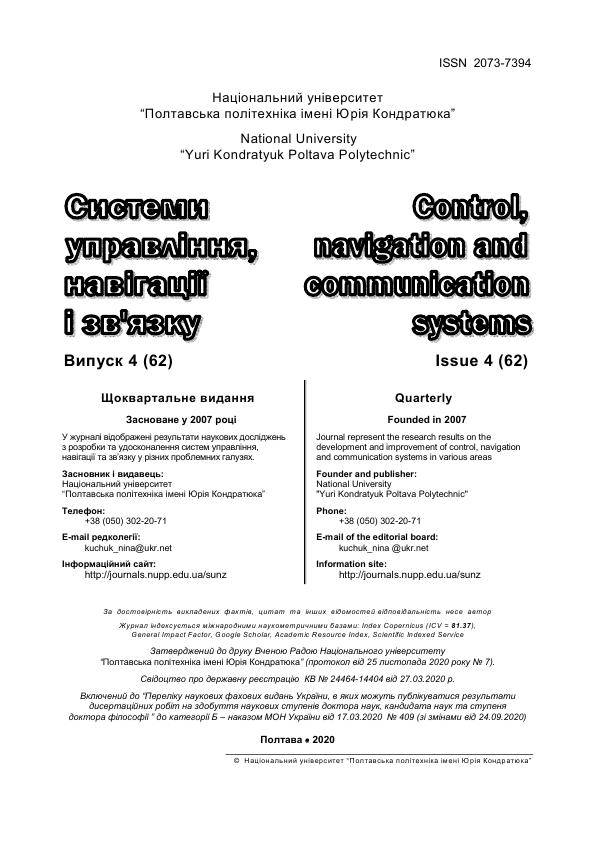INTELLECTUAL APPROACHES TO ENERGY SAVING IN WIRELESS SENSOR COMPUTER NETWORKS
DOI:
https://doi.org/10.26906/SUNZ.2020.4.114Keywords:
wireless sensor network, energy saving, artificial neural network, data mining, map of self-organization KohonenAbstract
The object of research is the analysis of existing approaches to energy saving in wireless sensor computer networks. Limiting the energy resources of wireless sensor computer networks is a big problem. The efficiency of wireless sensor networks strongly depends on their service life. The use of approaches based on the technology of automatic dynamic power change of the processor (Dynamic Power Management) is relevant. This leads to a reduction in energy consumption in the sensor units after the deployment and design of the sensor network. One of the many possible solutions to this problem is the use of data mining tools, in particular artificial neural networks (ANN). Such approaches have become relevant due to the fact that the use of ANN allows to increase energy efficiency in wireless sensor networks. The advantages of using ANN are: simplicity of parallel distributed calculations, distributed data storage, data reliability, automation of sensor node classification and reading from them. Reducing the dimensionality and prediction of sensor data obtained from the outputs of neural network algorithms can lead to lower communication costs and energy savings. All these advantages demonstrate the compatibility between wireless sensor networks and artificial neural networks. According to scientific research in this field, it is possible to use neural networks to reduce energy consumption. Conclusions. Energy saving is a key issue in wireless sensor network applications that should be considered in all aspects of using these networks. Neural networks as intelligent tools demonstrate great compatibility with the characteristics of wireless sensor networks (WSN) and can be used in various energy-saving schemes. This paper presents a classification of the most important applications of neural networks in energy efficiency WSN. The use of artificial neural networks in WSN can be generalized to sensor data prediction, sensor fusion, better path detection, sensor data classification, and node clustering. It is proposed to use a modified method of Kohonen self-organization maps to increase the efficiency of neural network algorithms. All this leads to lower communication costs and energy savings in sensor networks
Downloads
References
Anastasi, G., Conti, M., Francesco, D.M., Passarella, A. (2009), Energy Conservation in Wireless Sensor Networks: a Survey. Ad Hoc Networks 7(3), 537–568.
Shwe, H.Y., Xiao-hong, J., Horiguchi, S. (2009), Energy Saving in Wireless Sensor Network. Journal of Communication and Computer 6(5), 20–28.
Руденко, О.Г.,Бодянский Е.В.(2002), Основы теории искусственных нейроных сетей [Текст], Харьков: ТЕЛЕТЕХ., 317 с..
Oldewurtel, Frank and Mahonen, Petri, (2006) “Neural Wireless Sensor Networks”, International Conference on Systems and Networks Communications, ICSNC '06, pp.28 - 28.
Shahbazi, H., Araghizadeh, M.A., Dalvi, M., (2008) “Minimum Power Intelligent Routing In Wireless Sensors Networks Using Self Organizing Neural Networks”, IEEE International Symposium on Telecommunications, pp. 354--358.
Дяченко, В.А., Михаль О.Ф., Руденко О.Г. (2009), Сеть Кохонена с параллельным обучением / // Управляющие системы и машины, No 5. – С. 14-18.
Дяченко В.О. , Міхаль О.П. (2012), Адаптивне паралельне навчання модифікованої самоорганізованої карти Кохонена / Біоніка інтелекту : наук.-техн. журнал.– No 1 (78). – С. 85-90.
Diachenko, V., Liashenko, O., Mikhal, O., Ibrahim, BF., Koltun Y. (2019) Kohonen network with parallel training: Operation structure and algorithm // International Journal of Advanced Trends in Computer Science and Engineering 8 (1), pp.35 – 38.
Aslam N, Philips W, Robertson W, Siva Kumar SH, (2010) “A multi-criterion optimization technique for energy efficient cluster formation in Wireless Sensor networks”, Information Fusion, Elsevier.
Mei, L., Haihao, Li., Shen, Y., Fan, J., Huang, SH., (2009) “Elastic neural network method for multi-target tracking task allocation in wireless sensor network”, Computers and Mathematics with Applications, Vol. 57, Issue .11-12, pp. 1822—1828.




